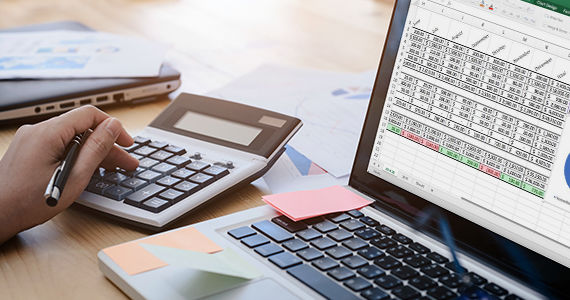Running a successful restaurant means keeping a close eye on your financial reports, and that includes your restaurant balance sheet.
A restaurant’s balance sheet provides an overview of your business’s financial health, and plays a valuable role in short and long-term forecasting. It can also provide insight into how you can adjust your spending to increase restaurant sales and reduce operating costs in your restaurant.
When used alongside other documents, such as your restaurant profit and loss statement (also known as your restaurant income statement), your cash flow statement, and your restaurant budget template, your balance sheet gives you a more complete picture of your restaurant’s finances.
To help you make sense of all these important documents, this article will provide a comprehensive introduction to:
- Restaurant profit and loss statements
- Balance sheets for your restaurant
- How to create a balance sheet with a restaurant-specific example
- A free restaurant balance sheet template to use in your own venue

Download this free balance sheet template to track your restaurant’s assets, liabilities, and equity.
Restaurant Profit & Loss Statements
Restaurant profit and loss statements (also known as restaurant income statements, a statement of earning, or a statement of operations) are money management tool used to review the total revenue and expenses of a business in a given period of time.
At its most basic level, your P&L reflects costs (expenses) that are subtracted from restaurant sales and the cost of goods sold. The result is a number that gives you a rough idea of your restaurant’s finances and performance over time.
To calculate your P&L statement, in any given period, you can use this simple formula:
Total Sales – Cost of Goods Sold – Expenses = Profit or Loss
If you use this calculation and end up with a positive result (a profit), it likely means that your restaurant is doing well financially, and that future strategic decisions derived from the P&L should be geared toward making the restaurant even more profitable. On the other hand, a negative result (a loss) means that it’s time to adjust your business strategy and decide where you can cut costs or increase revenue.
To illustrate how a restaurant income statement can be used, let’s use an example. Let’s say you want to calculate your P&L for the month of May. Assuming your total sales for the month equal $90,000, COGS cost you $18,000 and your other expenses total $50,000, your P&L formula would breakdown as follows:
90,000 – 18,000 – 50,000 = 22,000
This means that in the month of May, you made a $22,000 profit.
While this sounds great on the surface, it’s important to break down each section even further to truly understand what you’re spending. For instance, you can break your expenses section down into categories such as labor costs, rent, utilities, etc. You can easily do this using our free Profit & Loss Statement Template.
But while understanding your P&L statement is essential to tracking your monetary performance, your P&L alone won’t give you the full picture. That’s where your restaurant’s balance sheet comes in.

Use this customizable restaurant P&L template for Excel to analyze your operations, budget, and growth.
Restaurant Balance Sheets
Your profit and loss statement should not be confused with your restaurant balance sheet. While the P&L weighs sales and costs to show the amount of profit or loss generated by your restaurant, your balance weighs assets and liabilities to reveal if your business is financially stable.
What is a Balance Sheet?
A restaurant balance sheet is a statement that lists your business assets, liabilities (debt), and equity at a given point in time. In other words, it’s a snapshot of what your company owns and owes, as well as the amount invested.
A more tangible way to think about a restaurant balance is to imagine this statement as a set of scales. Your assets (everything your restaurant owns) sits on one side, and your liabilities (everything you owe) sits on the other. Calculating your balance will show you where you sit on this scale to help you better understand if you’re making a profit, breaking even, or losing money.
Ultimately, the main purpose of a balance sheet is to help you verify the accuracy of a profit and loss statement, and to provide you with a more holistic view of your restaurant’s financial health. Your restaurant balance sheet can also be used to forecast short and long-term cash flow. However, you should not confuse your balance sheet with a cash flow statement, which summarizes cash in and cash out. A cash flow statement should be used alongside your balance sheet and other reports to keep your monetary activities organized.
Balance Sheet Template
Consider using a template to evaluate the health of your business. Having a structure to follow can help you build reports that reflect your company’s net worth at any time. Plus, an easy-to-use-form with pre-populated categories should make it easier to fill out.

Download this free balance sheet template to track your restaurant’s assets, liabilities, and equity.
How to Create a Restaurant Balance Sheet to Forecast Cash Flow
To create a balance sheet for your restaurant, you need to list out everything that falls under the three main categories: assets, liabilities, and equities.
Assets Including Cash
Your assets refer to anything your restaurant owns. This can include everything from cooking equipment and furniture, to inventory and cash on hand.
Your assets can be further subdivided into two categories: current assets and fixed assets.
Types of Assets
Current Assets:
Current assets, also known as liquid assets, are those that can be quickly and easily converted into cash. For example, your current liquor inventory and the funds in your bank account.
Fixed Assets:
On the other hand, your fixed assets are items that are intended for long-term use and cannot easily be converted into cash. Fixed assets can include things such as kitchen equipment or any property you may own.
Types of Liabilities
Liabilities (another term for debts) refers to everything your restaurant owes. This can include outstanding bills, your property lease, and other loans.
Your liabilities can also be subdivided into two categories: current liabilities and long-term liabilities.
Current Liabilities:
Current liabilities refer to any external financial obligations that your restaurant is responsible for satisfying within one year. For example, utilities, short-term loans, wages, income tax, etc.
Long-Term Liabilities:
In contrast, long-term liabilities are any external financial obligations your restaurant is responsible for more than 12 months from now. Though long term-liabilities aren’t very common in restaurants, this can include capital leases, long-term rent agreements, or even deferred income tax.
Types of Equity
Equity
Finally, your equity (formally known as your retained earnings) is what’s left over after you’ve subtracted your restaurant’s liabilities from your assets. Your equity is what you take home, ultimately giving you an up-to-date representation of your total earnings or losses.

Download this free balance sheet template to track your restaurant’s assets, liabilities, and equity.
Restaurant Financial Statements: Balance Sheet Example
To make the concept of a restaurant balance a little easier to understand, let’s walk through a simple example.
Here, we’ll be talking about a restaurant called The Spotted Pig.
To start filling out our sample sheet for The Spotted Pig, we would begin by pulling data from the venue’s POS system and accounting software.
| Balance Sheet for The Spotted Pig | |||
| Assets | $ | Liabilities | $ |
| Current Assets: | Current Liabilities | ||
| Cash on hand: | 6,500 | Rent | 36,500 |
| Funds in the bank: | 125,000 | Wages (payroll) | 95,500 |
| Inventory | 4,000 | Short-term loans | 26,000 |
| Income tax | 20,900 | ||
| Sales tax | 13,100 | ||
| Total | 135,500 | Total | 192,000 |
| Fixed Assets: | Fixed Liabilities | ||
| Furniture | 18,000 | N/A | – |
| Kitchen Equipment | 210,000 | – | |
| Other | 14,000 | ||
| Total | 242,000 | Total | – |
| Total Assets | 377,500 | Total Liabilities | 192,000 |
| Equity = $185,500 |
In this example, our numbers break down as follows:
- Total assets: $377,500
- Total liabilities: $192,000
- Total equity: $185,500
To make sure these numbers are balanced, we would use the following formula:
If the data is correct, both sides of this formula will be equal. If they aren’t, this means there is an error somewhere in the data that needs to be corrected.
Let’s check The Spotted Pig’s restaurant balance:
Assets = Liabilities + Equity
$192,000 (total liabilities) + $185,500 (equity) = $377,500
$377,500 = total assets
Both sides of the equation are equal, so we know that our balance sample for The Spotted Pig’s is correct.
Managing Your Restaurant Balance and Finances
From the restaurant balance example above, it’s clear that there’s a lot of number-crunching involved in filling out this key financial spreadsheet. Fortunately, your POS can help you find what you need quickly and easily.
Most modern POS systems, including TouchBistro POS, are equipped with built-in reporting tools that help you fill in key portions of your balance report, P&L, and other financial spreadsheets. TouchBistro also integrates with powerful analytics software like Avero to help you pull reports for specific categories such as COGS, sales, stock on hand, labor costs, and more.
With these tools on hand and the help of our handy restaurant balance sheet template, filling out your restaurant balance is a breeze.

Download this free balance sheet template to track your restaurant’s assets, liabilities, and equity.
Download our free inventory template
Sign up for our free weekly TouchBistro Newsletter







